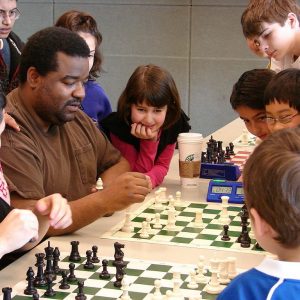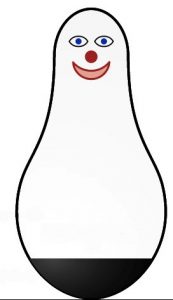Bandura’s Social Learning Theory and Observational Learning
Observational learning is a component of Albert Bandura’s Social Learning Theory, which asserts that individuals can learn new responses via observation of key others’ behaviors. Observational learning does not necessarily require reinforcement, but instead hinges on the presence of others, referred to as social models. Social models typically possess a higher status or authority compared to the observer, examples of which include parents, teachers, or police officers.
Bandura theorized that the observational learning process consists of four parts. The first is attention-one must pay attention to what one is observing in order to learn. The second part is retention. To learn, one must be able to retain the observed behavior into one’s memory. The third part of observational learning, initiation, acknowledges that the learner must be able to execute, or initiate the learned behavior. Lastly, the observer must possess the motivation to engage in observational learning.

Figure 1. Children observe a social model (an experienced chess player) to learn the rules of the game. (Photo Source:
David R. Tribble,
CC BY-SA 3.0.)
Imagine a child walking up to a group of children playing a game on the playground. The game looks fun, but it is new and unfamiliar. Rather than joining the game immediately, the child opts to sit back and watch the other children play a round or two. While observing the others, the child takes note of the ways in which they behave while playing the game. By watching the behavior of the other kids, the child can figure out the rules of the game and even some strategies for performing well at the game. This is called observational learning.
In the example here, the child must want to learn how to play the game in order to properly engage in observational learning. The children who already know how to play the game could be thought of as being authorities—and are therefore social models—even though they are the same age as the observer.
By observing how the social models behave, an individual is able to learn how to act in a certain situation. Other examples of observational learning might include a child learning to place her napkin in her lap by watching her parents at the dinner table, or a child learning how to use a pair of scissors after watching another child successfully use a pair of scissors.
The Bobo Doll Experiment
Researchers have conducted countless experiments designed to explore observational learning, the most famous of which is Albert Bandura’s “Bobo doll experiment.” In this experiment, Bandura had children individually observe an adult social model interact with a clown doll (“Bobo”).
For one group of children, the adult interacted aggressively with Bobo: punching it, kicking it, throwing it, and even hitting it in the face with a toy mallet. Another group of children watched the adult interact with other toys, displaying no aggression toward Bobo. In both instances, the adult left and the children were allowed to interact with Bobo on their own.
Bandura found that children exposed to the aggressive social model were significantly more likely to behave aggressively toward Bobo, hitting and kicking him, compared to those exposed to the non-aggressive model. The researchers concluded that the children in the aggressive group used their observations of the adult social model’s behavior to determine that aggressive behavior toward Bobo was acceptable.
While reinforcement was not required to elicit the children’s behavior in Bandura’s first experiment, it is important to acknowledge that consequences do play a role within observational learning. A future adaptation of this study demonstrated that children in the aggression group showed less aggressive behavior if they witnessed the adult model receive punishment for aggressing against Bobo. Bandura referred to this process as vicarious reinforcement, as the children did not experience the reinforcement or punishment directly, yet were still influenced by observing it.
- Individuals learn through observing others.
- Bobo doll experiment—children were more aggressive toward the Bobo doll if they witnessed models being aggressive.
Rescorla, R. A. (1988). Pavlovian conditioning: It’s not what you think it is. American Psychologist, 43(1), 151–160.
Bouton, M. E. (2007). Learning and behavior: A contemporary synthesis. Sinauer Associates.
Bouton, M. E. (2009). Learning theory. In B. J. Sadock, V. A. Sadock, & P. Ruiz (Eds.), Kaplan & Sadock’s comprehensive textbook of psychiatry (9th ed., pp. 647-658). Lippincott Williams & Wilkins.
Domjan, M. (2010). The principles of learning and behavior (6th ed.). Wadsworth.





